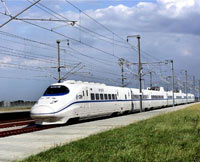
August 2008
- Apparel Product Focus: Protected in Comfort
- Hand Protection: Wash and Wear Longer
- What Latino Workers Want to Hear
- Confined Spaces: Safe Comm. Systems
Click here to subscribe.
Features
By Lance D. Harry, P.E.
The use of fire protection technology in “mission critical” facilities has long been a standard for most engineering, IT, and facilities professionals. Whether it be as simple as portable extinguishers or as complex as high sensitivity smoke detection coupled with clean agent suppression systems, some sort of fire protection is a must.
By Hugh Hoagland, W. Jon Wallace
Globalization is good for you! Keep saying it (even if you don’t believe it): It really is good for everyone. Things change, and the individuals and companies that can improve, innovate, and automate will win.
By Jerry Laws
There are lessons for firefighters and fire departments in the city of Charleston, S.C.’s comprehensive Phase II report on nine Charleston Fire Department firefighters’ deaths on June 18, 2007, in the Sofa Super Store fire— the worst single loss of life for the fire service since 9/11. The cultural lessons may be most important and also hardest to embrace.
By Jerry Laws
Only six directors have headed the agency since its creation, and with Dr. John Howard having handed over the post in mid-July to an acting director, a vacancy of at least six months seems likely this time.
By Jennifer Stroschein
Hands and fingers are always close to the action, so they need appropriate protection. How do employees know which hand protection they should use? They don’t, unless they’re aware of the hazard(s) and wear the necessary PPE.
By Linda J. Sherrard
With springtime comes the surge of construction activity—an exciting time, and possibly a dangerous time, too. Lots of new sites begin work as soon as the severe weather breaks. New crews, different trades, and subcontractors work in close proximity with seasoned workers, temporary employees, and even interns.Multicultural and -lingual sites are common.In such settings, how do you know who is at risk for injury?

By Marc Barrera, Ronnie Rittenberry, Jerry Laws
Billions of people beheld an Olympics of unprecedented size and beauty when the opening ceremony raised the curtain Aug. 8 on Beijing, China, home to 15 million residents. Their water system, fire protection, transportation, and air quality have been improved expressly to showcase this event, and American companies' products are involved in much of this transformation.
By Jerry Laws
OSHA has two significant rules due for release this fall. MSHA has a proposed rule and two final rules pending. Will any of the five see the light of day before the presidency of George W. Bush ends in January 2009, probably closing the book on one of the longest-serving Labor secretaries in history, Elaine Chao?
By Rolf Eberl
Good communication is one of the most important tools for ensuring workers’ safety and work efficiency, especially when confronting the hazards of confined space entry. Benefits are also realized in productivity, costs, and workers’ confidence. In some circumstances, communication makes an otherwise impossible task possible.
Departments
By Ronnie Rittenberry
It’s easy to make light of the solid waste industry, or, for those above such things, to take it entirely for granted. The reality, however, is that without it, civilization as we know it would not last long. And things would get putrid pretty quickly.
By Robert Pater
Looking for a solid way to boost worker involvement? If you’ve read any of my other writings or attended my presentations, you’ve likely heard me extol the paybacks of training workers as peer Safety change catalysts. I know this from worldwide experience—we’ve trained more than 20,000 such “Instructor-Catalysts” in our injury- prevention systems and have seen results that one senior manager called “miraculous” in both Safety performance and cultural turnarounds.